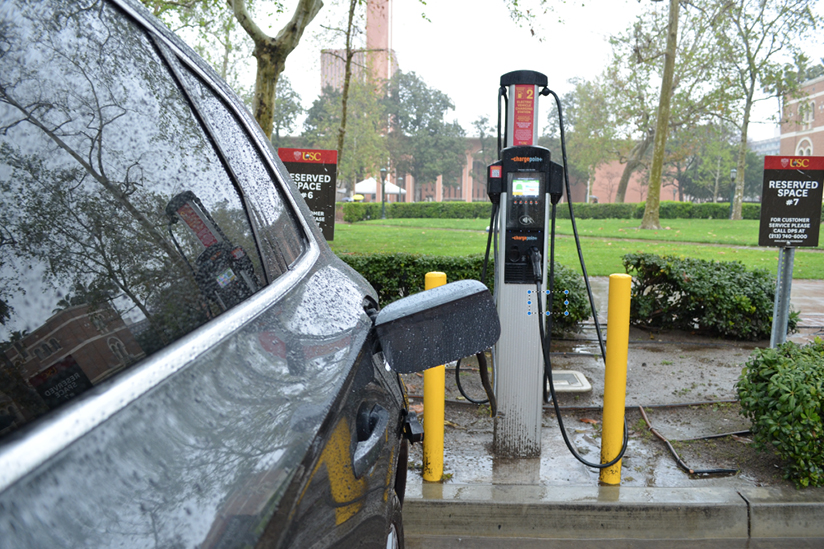A team of researchers at the Keck School of Medicine documented the effect of adopting zero-emission vehicles in one of the first-ever studies in the field that reveals the association between ZEVs, air pollution and public health.
ZEVs — primarily electric cars — have been presupposed as a pivotal part of the effort to ameliorate the climate crisis. However, not many studies have been done to bolster the widespread hypothesis.
The paper, published this February in Science of the Total Environment, analyzed the “natural experiment” in California as consumers’ adoption of ZEVs upticks rapidly. As ZEV adoption rose in a given zip code, local air pollution levels and emergency room visits dropped, the study found.
Erika García, an assistant professor of population and public health sciences at the Keck School of Medicine and the study’s lead author, has studied air pollution exposure in California for years. As the number of electric vehicles on the road has increased, she started wondering about the effect this would have on her field of study.
“As we are making this transition to electric vehicles, what are going to be the impacts on the air we breathe, and on the health of the community?” García asked.
Researchers at Keck obtained and analyzed four distinct datasets to study the effect of ZEV adoption. They first obtained data on ZEVs, including battery electric, plug-in hybrid and hydrogen fuel cell cars, from the California Department of Motor Vehicles and cataloged the registration information into different zip codes.
The researchers also acquired data from the United States Environmental Protection Agency air monitoring sites on levels of nitrogen dioxide, a gaseous air pollutant that aggravates respiratory diseases, particularly asthma. They then calculated the percentage of adults in each zip code who held college degrees, a conventional indicator of the neighborhood’s socioeconomic status.
“What was really crucial is that … we are able to adjust for what’s called potential confounders,” said Sandrah Eckel, an associate professor of population and public health sciences at the Keck School of Medicine and the study’s senior author. “So, we wanted to control, for instance, socioeconomic status [of each zip code] to make sure that we weren’t finding spurious associations.”
Among all zip codes in the state, the average number of ZEVs in each area increased from 1.4 to 14.6 per 1,000 people from 2013 to 2019. The study found that for every additional 20 ZEVs per 1,000 people, there was a 3.2% reduction in the rate of asthma-related emergency visits and a suggestive drop in NO2 levels.
The study also found that ZEV adoption was significantly lower in zip codes with lower levels of educational attainment. A zip code with 17% of its residents holding bachelor’s degrees had, on average, an annual increase of 0.7 ZEVs per 1,000 people, whereas zip codes with 47% of the population having a bachelor’s degree had an annual increase of 3.6 ZEVs per 1,000 people.
